Benching Bryce Young Saved Him
After just one season, there were whispers all around the NFL about the “B” word when it came to Bryce Young. “Was he a bust?”
The constant refrain was also, “I can’t believe the Panthers took Young instead of C.J. Stroud!”
To be fair, Young’s rookie season was nothing short of a disaster. He threw for less than 3,000 yards in 16 games (which would have been a concerning stat even 20 years ago). And he completed less than 60% of his passes.
His head coach got fired 11 games into the season, and the Panthers earned the #1 overall pick (which they didn’t get to use because they traded it away the year prior to get Young).
It doesn’t get much worse than that.
Receive breakdowns like this directly in your inbox by subscribing here:
It wasn’t all Young’s fault. His O-line was atrocious and his receivers couldn’t create any separation.
Regardless, he needed a bounce-back year in 2024 to revive, if not save, his career. You can imagine the pressure he was under entering the season. Especially considering he was learning a new system and also was at a disadvantage given the talent he had around him.
It showed in his first two starts.
The Panthers lost both games by a combined score of 73-13. Young threw for less than 250 yards total across the two games. He also completed just 55% of his passes, fired 3 interceptions with no touchdowns, and had a passer rating of 44.1.
On film, he wasn’t quite as bad as his numbers indicated, but he was certainly off in those first two games. He was playing fast, missing throws, and not seeing the field clearly:
This interception in Week 2 against the Chargers was a great example of what was wrong. Young appeared to pre-determine that he was going to try to make this throw come hell or highwater. Watch him look left immediately and stay there:
Young was trying to hit the wrap-in, but the linebacker underneath never widened. That forced Young to put this ball further inside than he wanted to. It didn’t help that the quarters safety to that side was ready to pounce on any in-breakers from #2. This play was dead from the jump, but Young forced it anyway.
Take another look from the end zone angle:
This was a 1st-and-10 in the 2nd-quarter too. There was no need to force that throw.
A play like this was probably a decent indicator to head coach Dave Canales that Young wasn’t seeing the field, reading things out, or doing what he was supposed to.
That’s a big problem, because for Young to be successful, he has to be able to process accurately and quickly post-snap, play with good timing, get the ball out of his hands with great anticipation, and make good decisions. He does not have the physical talent to get away with as much as some other quarterbacks do.
A mental reset was needed. Young needed time to take a breath and gain a new perspective by watching a veteran like Andy Dalton.
And boy did Young reset, because when he got back in the lineup 6 weeks later, he was a different player.
In that first game back, Young didn’t lead his team to victory or put up big numbers. In fact, the Broncos beat the doors off the Panthers. But there was a calmness and level of control to his game that was different.
He was manipulating defenders and comfortably working through progressions. Both of which were signs of how well he was seeing the field and processing.
You could see it on this play. Notice Young peak to his right at the snap, moving that deep safety to his left just a couple of steps towards the middle. Then Young turned and instantly delivered this ball back to his left. The safety’s movement created just enough of a lane to fit this pass in:
Young knew he was going left the whole time but needed to move the key defender. He did so successfully for the touchdown.
Here’s another example. Watch Young hold the safety in the middle of the field before coming back to the seam route to his right:
From the sideline angle, you can see the safety moving to the middle with Young’s eyes, creating the void for him to fit this throw in:
His receiver dropped it, but that was a perfect throw and a great job of creating the void in the coverage.
Another sign of a comfortable quarterback is one who is effectively working deep into his progressions, like Young did on this next play.
Watch him start to his right and then get to his 4th receiver before delivering an accurate strike, all within the natural timing of the play:
His feet broke down a bit there, but the speed with which he processed each of his reads showed a level of control and clarity in the way he was seeing the field that wasn’t there in his first two games.
Young continued that trend for the rest of the season. He played with the same timing and anticipation we all saw in college.
Just look at this throw from Carolina’s Week 18 win over the Falcons. Young processed the coverage so quickly that he was able to get the ball out before the defense knew what hit them:
His receiver was just 5 yards into a route that would hit 20 yards downfield when Young had already made his decision and started his throwing motion:
That’s the honey-hole shot you generally only see big-armed quarterbacks make. Young was able to hit it as a result of his quick processing and timing.
He also had several big-time anticipation throws in key moments at the end of games, great indicators of how comfortable he ultimately was.
This first example was a 3rd-and-10 in the Panthers’ Week 10 win over the Saints. Carolina trailed 22-17 with a little over 3 minutes remaining. Just look at this throw:
Young threw that ball into the open window, releasing it well before his receiver was out of his break and before the defense could react:
At the moment Young is releasing that ball, does this route look open to you? It takes great recognition and understanding of the defense to make a throw like that. Carolina would take the lead for good a couple of plays later.
This next example was absolutely outstanding. The Panthers faced a 3rd-and-8. Young read that the Chiefs were bringing the house on a cover-0 blitz and the protection couldn’t account for it. He picked up the tempo of his drop to get this ball out quickly and then delivered another throw with tremendous anticipation and accuracy for a 17-yard gain:
Once more, look where his receiver was in his route when Young had made his decision, broken his hands, and started his throwing motion:
Not to mention, Young knew he was going to get drilled here, and yet he hung tough, delivering a perfect ball in the face of pressure:
That’s professional quarterbacking. And that’s the version of Young that will play in the league for another 10-15 years.
If you’re looking for another good indicator of how comfortable Young was when he returned to the lineup, there’s this: He finished the season with the 9th-highest frequency of throws traveling 20 yards or more, and PFF had him as the 5th-highest rated passer on those throws.
Young doesn’t have a big arm, which means all of that was the result of his ability to process and deliver with great timing.
I’m excited to see what Young can do in 2025 in his 2nd year with Dave Canales and with some more talent around him.
Above, I showed you a few plays highlighting Young’s improvement during his second season. If you’re looking for more, be sure to check out my Bryce Young Film Session, where I go into greater depth and take you through roughly 40 plays from his 2024 season.
The first several plays are free to view, but you’ll need a Founding Member subscription to see the rest.
And remember, a Founding Member subscription also gets you access to our playbook with over 80 breakdowns grouped by concept (e.g. passing game, running game, situational, coverages, pressures, etc.).


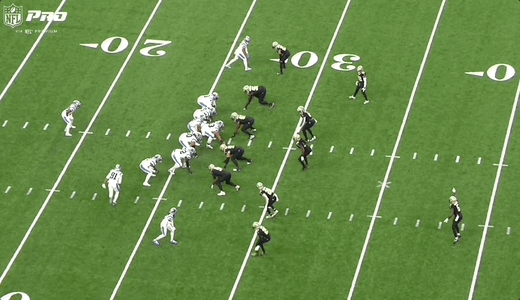
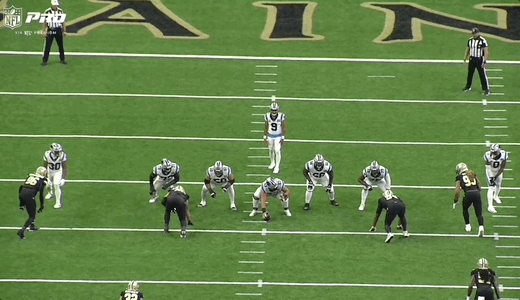

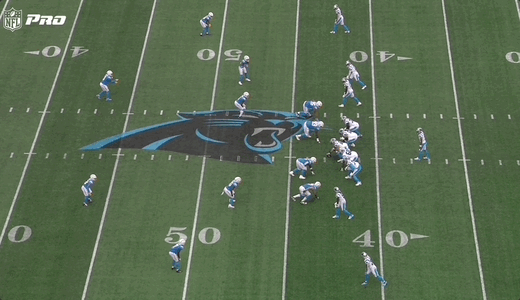






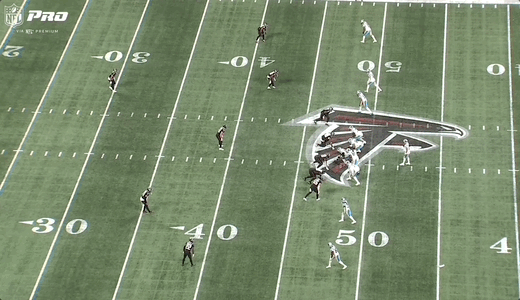


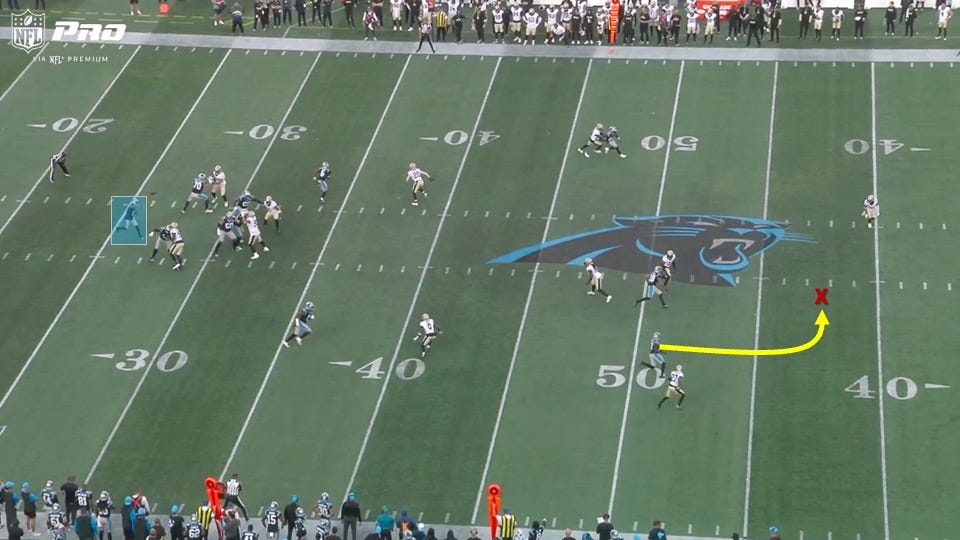

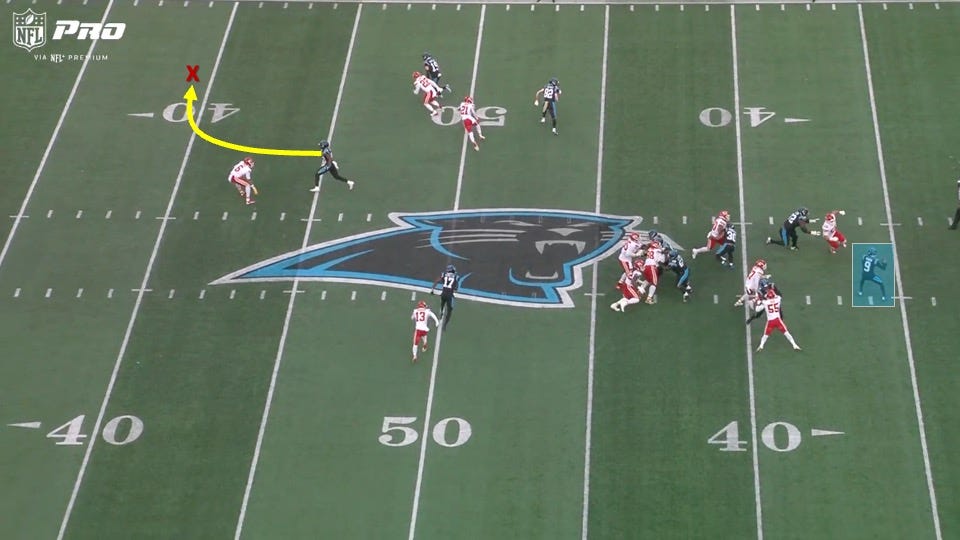

Bryce’s father is a psychologist . He used to blindfold Bryce and taught him to feel what was around him. He also used some drills to not panic when feeling arms around his feet and legs in the pocket. It made him have a presence even in high school which made him the number one QB coming out. I’m. A gigantic Bama fan and saw every minute of his all of his games and the things he was able to do were things I’ve never seen a QB do. There is no panic in his game and maybe he lost some of his confidence his first year but if this kid gets the same confidence back that he had at Bama the NFL better be on notice because he can put that ball anywhere he wants at any time. Carolina did not draft a bust. If they ruin the kid that on the franchise.